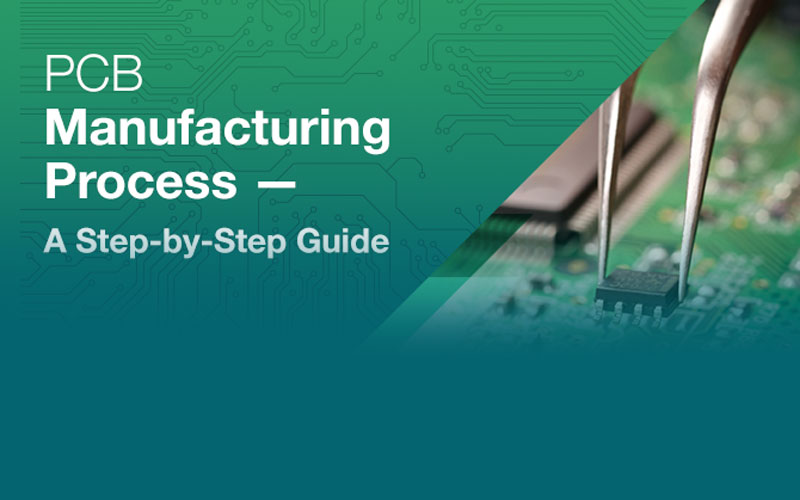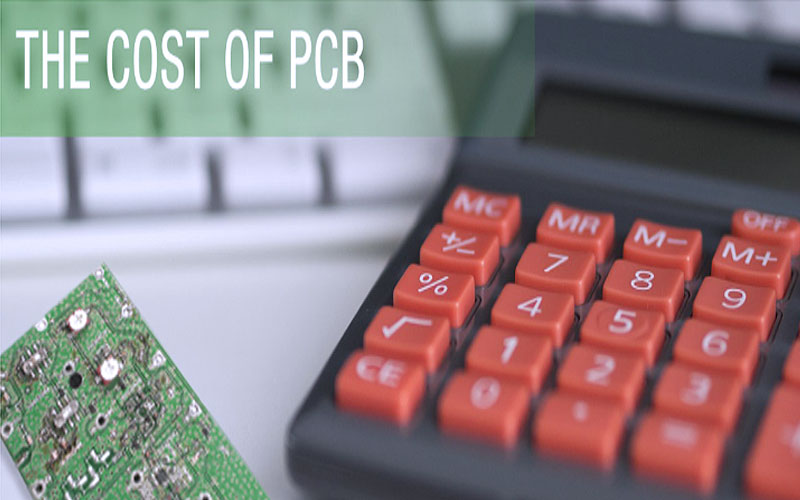Many engineers, especially those just starting out, ask questions like “Where can I find the cheapest PCB assembly service?” or “How can I reduce my PCB assembly cost?” To tell the truth, there’s never any “cheapest” PCB assembly service. For those who only strive for low prices while neglecting PCB assembly quality, their projects may very likely fail due to low-quality circuit boards.
Although PCB assemblers are constantly trying to find ways to reduce circuit-board assembly cost to attract more business and ultimately gain more profit, price varies from one assembler to another. We strongly recommend you find a balance between assembly quality, customer service, and cost. The priority is to adjust your circuit design to reduce the assembly cost, and pinpoint the right PCB Assembler with the best overall service within your budget.
1. Locate a reliable, professional, and “low-cost” PCB assembler.
Almost all PCB assembly service providers declare to provide cost-effective service, but not all offer what they claim. First and foremost, you should be fully aware of your project’s requirements and budget; then conduct head-to-toe research on each assembler through the internet, magazines, or trade shows. A lot of time and effort is required, but it’s worth it in the long run. When researching PCB assemblers, make sure you cover the following aspects:
Certificates: Certificates accurately ensure a PCB assembler’s manufacturing capabilities and management regulations they follow. Necessary certifications include ISO9001, RoHS, UL, etc. ISO9001 is a family of international quality-management standards and guidelines aiming to promote companies’ and organizations’ capabilities to meet and exceed the needs and expectations of customers by efficiently and effectively improving the quality of their products and services. Restriction of Hazardous Substances, or RoHS, is a series of restrictive laws regarding the application of six hazardous substances in the manufacture of electronic and electrical equipment. The UL listing service, applicable for printed-circuit boards (PCBs) and power supplies, requires manufacturers to rigorously test their products by conforming to correct procedures to minimize product hassles.
Equipment: Up-to-date equipment contributes to high efficiency and high quality of assembly. With the development and increasing popularity of surface-mount technology (SMT), SMT placement equipment is closely associated with high-precision placing of components and high manufacturing speed.
Component procurement: Based on PCBCart’s years of experience in PCB industry, we noticed too often money and time are lost in the manufacture stage of PCBs due to the disjointed relationships between phases of the process. To save money and time, we recommend you cooperate with PCB assemblers that offer a components sourcing service. As a result, you can fully focus on project engineering, and let the Assembler do what it’s good at—purchase inexpensive but excellent components and assemble them onto your circuit boards. We’ll discuss how to judge whether a PCB assembler has competitive components-sourcing capability later on.
Apart from those aspects, quotation rate, lead time, price, manufacturing capabilities, minimum order volume, and others should be considered when selecting a reliable PCB assembler. Some of those aspects will be discussed further down in the article.
It’s worth mentioning that the world’s electronic circuits are based on the U.S. dollar system, leading to few fluctuations on expenses between countries—except for labor cost, which is distinctive from country to country. Therefore, PCB assemblers based in the U.S. and Europe have fewer advantages on price than those from populated developing countries, such as China.
Because finding the PCB assembler that best fits your needs is such a complicated process, striving for only one or a couple of those aspects is just unilateral. You should consider them comprehensively.
2. Optimize the schematic design of bare PCBs based on low-cost concerns.
The first step before real manufacturing is to check whether your circuit can be normally implemented—otherwise known as a design-for-manufacturing (DFM) check. A lot of PCB assemblers provide free DFM check service, which you can rely on to reduce the assembly cost.
Factors influencing cost of bare PCBs are illustrated in the figure. To reduce the cost of your bare PCBs, measures can be done to each element:
Layer count: PCB cost increases when adding layer count—in other words, as more layers are added to one circuit board, the greater the expense.
Via tech: Vias, including blind vias, buried vias, or even microvias, play a key role in building interconnections on a circuit board. Generally speaking, with more vias comes higher costs and smaller diameters, and thus more expensive PCBs. Therefore, you should carefully arrange the number of vias to reduce the cost of bare PCBs while guaranteeing sufficient functions.
Size and shape: Circuit boards should be designed neatly and functionally. A PCB’s size should correspond to the requirement of pick-and-place equipment owned by your PCB assembler. It should be accurately designed to be able to implement all functions and account for moderate space. Panels are recommended when necessary. However, with the improved density and complexities of modern electronics, small PCBs can also be relatively complex. Being small doesn’t directly lead to low cost. Shape also affects the price of PCBs. Basically, standard shapes such as a square or rectangle lead to lower prices, while special shapes are typically more expensive.
Surface finish: By preventing pads from oxidizing, the surface finish helps ensure excellent solderability and electric performance. Different types of surface finishes (HASL, OSP, ENIG, ENEPIG, etc.) have their advantages and disadvantages—choose the surface finish type that best fits your product’s requirements.
As a matter of fact, the cost of bare PCBs results from multiple elements, each of which could lead to slight fluctuations in their final price. These are only some practical tips based on our years of PCB manufacturing and assembly experience.
3. Prepare an effective and complete BOM.
The bill of materials (BOM) is a comprehensive list of raw materials, items, assemblies and sub-assemblies, components, etc. for product manufacturing. Some of you might think creating a BOM is much easier than making the Gerber file. The truth is we found more mistakes tend to be made in the BOM then in Gerber files.
A complete BOM should include essential items for PCB assemblers, including part number, manufacturer name, reference designator, quantity, description, case/package, SMT method, top/bottom, points/footprint, and BOM level. Usually, PCB assemblers have their In-house BOM template and BOM creating guidelines, which you can fill in accordingly and speed up the quotation procedure.
It’s highly recommended to add components replacement in your BOM. As electronics advance at an ever-more accelerated pace, components of course get upgraded rapidly as well, with old parts getting discarded. Though your PCB assembler will inform you about items that went out of production, time will be wasted locating replacements, thus delaying production. With the complete BOM and replacement provided, a PCB assembler can provide a quote in just one or two days and start the production with your confirmation. It’s always a good idea to look forward and be fully prepared for any kind of emergency.
4. Make components sourcing clear.
If you’re with a company of small size, it’s hard to control your budget and project schedule. Under this circumstance, relying on a PCB assembler will make more sense. PCB assemblers are more likely to have friendly relationships with franchised component distributors due to their long-term cooperation. They can get your needed components from those distributors at a wholesale price, which is much lower than retail price. To evaluate a PCB assembler that has genuine cooperation with franchised component distributors, you can ask for its purchase invoice from distributors.
5. Adjust order volume and lead time.
Order volume is usually inversely proportional to the price of each commodity. In general, the higher your order volume becomes, the less expensive it will be for each circuit board assembly (the same goes for PCB manufacturing service). Take your company or organization’s situation into consideration, and know your order volumes (high, medium, or low), then select a PCB assembly manufacturer that can cater to your order volume.
In terms of lead time, the main problem lies in its calculation. Never get confused by the attractive lead time promised by a PCB assembler. Different PCB assemblers have different lead time calculations, so make sure you know the following: What is the starting time? What is the day you order and day for payment? What day do the components arrive? Overall, the basic rule on lead time is the longer your lead time, the lower the price.
6. Never neglect inspection or test.
You must be wondering the relationship between cost reduction and inspection or test. In general, inspection or test implementation increases cost. However, under the theme of the mission explained at the beginning of this article, the aim is to reduce cost without diminishing the quality of products.
Inspection or test has played a crucial role in contributing to the high quality of products by illuminating issues or mistakes in advance. However, some PCB assemblers provide such service, while not offered by others. It’s more convenient and efficient to have products inspected or tested in their manufactured house. Under such conditions, a PCB assembler usually provides lower cost on inspection compared with those only dealing with inspection. Furthermore, your products needn’t suffer from being delivered everywhere.
If your PCB assembler provides inspection service at the end of production line, you should provide your test jig so that their test can be implemented according to your specification. Ordinary inspection methods range from visual inspection to automated optical inspection (AOI) to automated X-ray inspection (AXI).
For large volume orders, it’s necessary to carry out First Article Inspection on the first several products prior to real volume assembly. It exposes issues such as component orientation and polarity, and enables modification to be made in time. Time permitting, you can even ask your assembler to deliver sample products so that you can have it run in real circumstances.
One more rule: Stick to one PCB assembler as your partner. If you’re doing business with a PCB assembler for more than five years, then you can probably depend on them based on smooth cooperation, mutual credit, and trust established through that time. However, if you’re having a tough time with your PCB assembler of late, or your business is suffering some type of cost crisis, then it’s time to make some changes.
Rigorously conforming to the rules of thumb discussed in this article can help shape your decision and ultimately select your new PCB assembler. And you’ll surely cut some cost without sacrificing quality.





